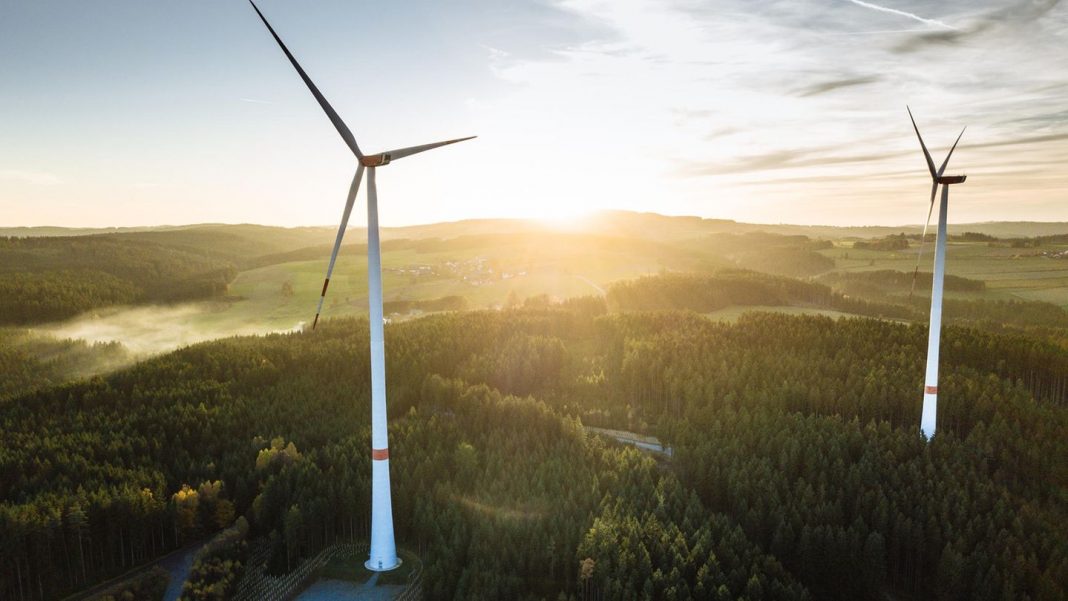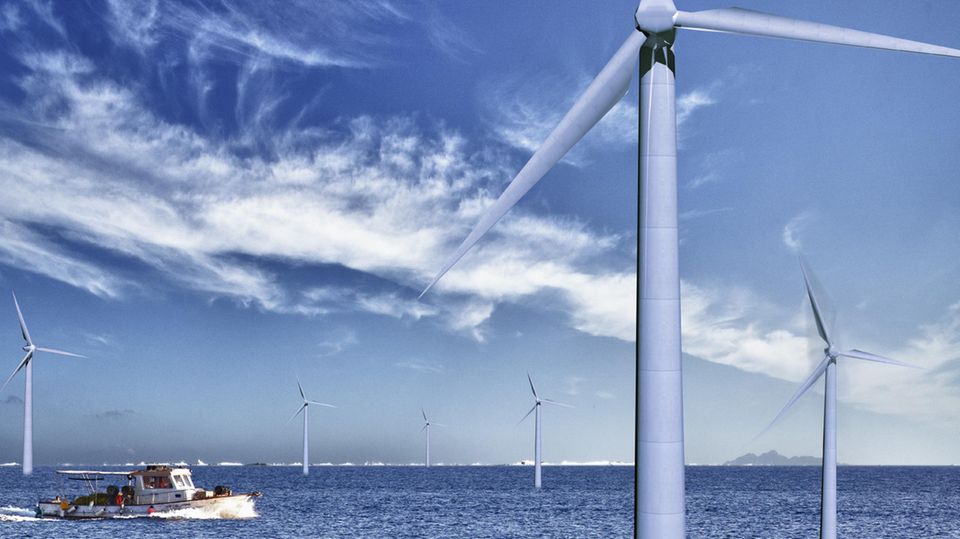Renewable Energy
Ever bigger, ever higher? Danish scientists say we are building our wind power plants wrong

Wind power plants are currently growing to over 200 meters in height.
© Bene_A / Getty Images
Wind turbines are increasing in height, increasing costs and decreasing acceptance among local residents. A study shows that wind power plants could be smaller, more efficient and cheaper if several rotors are arranged in a row.
How to generate more energy with the wind? For years, the answer has been: we simply build the towers higher and the rotors larger, so we catch more wind. But this development encounters two problems. At least in inhabited areas, the gigantic wind turbines have led to a massive decline in acceptance by the resident population. In addition, the static problems grow with height. The whole plant is exposed to higher loads.
Four rotors in a row
Scientists from the University of Aarhus in Denmark and the University of Durham in the UK have shown in a study that the existing wind power plants have a capital design defect. They rely on only one rotor with two or three blades each. In a computer simulation, the researchers showed that systems with multiple rotors work more effectively in a row.
Oceanbird-90 percent less emissions thanks to wind power
5
Display images
The main reason is that systems with multiple rotors generate less turbulence in the wind shadow. Behind a rotor, the air swirls and creates a zone with low wind speed. These turbulences slow down the rotor, for it is important not only with which speed the wind arrives, but also with which it flows off. “In our study, we found that turbulence and currents in the wake of the turbines recover much faster in multi-rotor turbines,” says Mahdi Abkar, assistant professor at Aarhus University. “This means that in the case of multirotors, a second system downstream generates more energy and is subjected to less stress because the turbulence is correspondingly lower.”
“We studied several different geometries and dynamics of multi-rotor turbines and found that the optimal design is a turbine with four rotors as far apart as possible.”The latter leads to less turbulence downstream and to a faster stabilization of the wake behind the wind turbines.”
Cheaper and more efficient
“You can increase your energy yield at any time by increasing the diameter of the rotor blades, but there are major structural challenges in building these massive structures with diameters of more than 150 meters. The demand for materials is increasing, the transport of the buildings is cumbersome and expensive, and it is becoming more expensive to maintain the wind turbines,” says Abkar. With the same surface area of the rotors, a system with four rotors in a row would be much more compact, it would generate about two percent more electricity, but this is not much of a factor in a system that is significantly smaller. More decisive are the 15 percent lower costs during construction, in addition to savings in transport, construction and maintenance. Another side effect: if one of the rotors no longer works, the rest of the turbine still produces energy in contrast to ordinary wind turbines.
Worldwide, wind power is the renewable energy with the highest potential. Although the problem of intermediate storage has not been solved here either, wind energy can already supply electricity at marketable prices today. A similar potential can also be seen in wave and tidal power plants, but compared to wind power, the plants here are still in the stage of large – scale field trials.
Source: Researchgate
Read also:
Ocean Energy: This 826-ton buoy turns waves into green electricity
Have Swiss solved the biggest problem of clean energy?
This way you can extract the energy of 2000 nuclear power plants from river water




